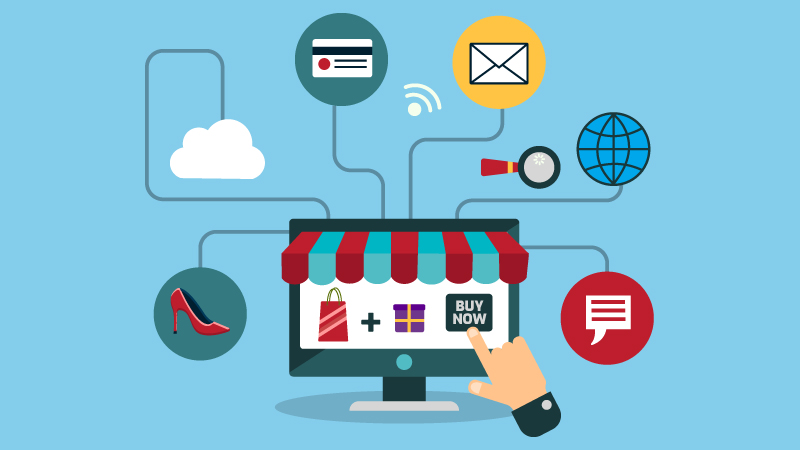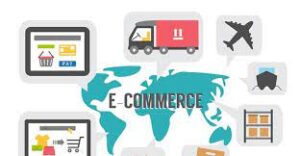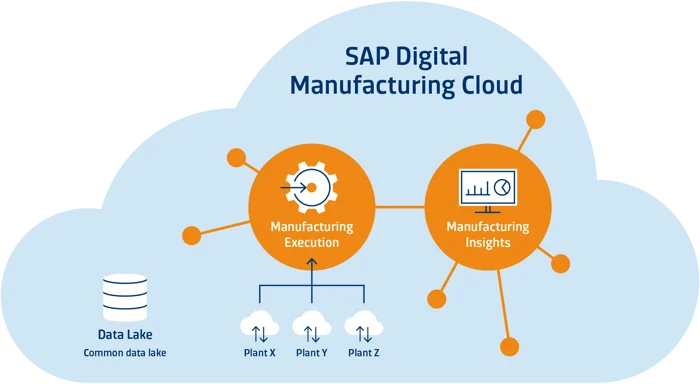Most Important Innovations in E-Commerce

Ecommerce Innovations has emerged as a prominent e-commerce specialty retailer and currently operates eight distinct brands. These brands include Inspired Silver, Inspired Shades, Inspired Cases, Inspired Posters, End of Retail, Wallet Outlet, Wallpaper Nation, and Next Styles.
Retail innovations are driven by evolving consumer needs, and the future of retail extends beyond convenience alone. Brands must prioritize personalization, creating memorable shopping experiences, and embracing social responsibility as core elements of their strategies.
Most Important Innovations in E-Commerce
In the ever-evolving e-commerce industry, innovation and risk have shaped the landscape. Several groundbreaking innovations have captivated the e-commerce world, revolutionizing how businesses operate and how customers engage with online shopping. Ecommerce innovations have transformed the shopping experience, enabling global access to products and services with a few clicks. Technological advancements have expanded e-commerce beyond traditional online shopping, revolutionizing the way we shop and connect with businesses.

ecommerce innovations
1. Real-Time Location-Based Mobile Selling
Real-time location-based selling technology has empowered retailers to target customers based on their exact location, delivering personalized messages and offers in real-time. This innovation is especially valuable for brick-and-mortar retailers, as it enables them to drive foot traffic, enhance customer engagement, and boost sales.
2. Super Fast Delivery and Instant Pickup Counters
Super fast delivery and instant pickup counters are innovative e-commerce solutions that provide numerous benefits for retailers and customers alike. Let’s explore how they deliver on these advantages.
- Convenience: Super fast delivery and instant pickup counters provide customers with quick and convenient order fulfillment options.
- Speed: These solutions offer rapid order processing, with delivery times as short as a few hours or instant pickup in minutes.
- Competitive advantage: By offering these services, retailers can differentiate themselves from competitors and foster customer loyalty, gaining a competitive edge.
Benefits of AI in advertising and lead generation include:
- Increased sales: AI-generated leads have been shown to boost sales by 50%.
- Targeted advertising: Top-rated firms use AI to tailor advertisements 28% of the time, leading to improved targeting and engagement.
AI-powered personalization leverages machine learning algorithms to analyze customer data, delivering personalized recommendations, pricing, and promotions. This approach enhances customer satisfaction, fosters loyalty, and drives sales. It is implemented across multiple channels, including websites, mobile apps, and email marketing campaigns.
4. Voice-Powered Shopping
Voice-powered shopping is a rising trend in e-commerce. Research indicates that 51% of mobile shoppers utilize voice assistants to search for information.
- Hands-free purchases: Voice-powered shopping enables customers to make purchases using voice commands, eliminating the need for manual input.
- Product exploration: Voice assistants help customers discover new products and compare options across different brands, leading to informed purchasing decisions.
- Personalized recommendations: Through machine learning algorithms, voice-powered shopping provides personalized recommendations based on customer preferences and past behavior.
- Convenience and accessibility: Voice shopping offers a convenient and accessible experience, allowing customers to shop anytime, anywhere, without the need for screens or keyboards.
5. Shopping using AR Technology
According to industry experts such as Global Newswire, the augmented reality (AR) industry is experiencing rapid growth, surpassing most other technologies. Projections suggest that by 2030, the AR market will expand at a compound annual growth rate (CAGR) of approximately 41.5%, reaching a value of approximately $461.25 billion.
Here’s how shopping using AR technology is beneficial –
- Product visualization: AR allows customers to use their smartphones or tablets to visualize products in a real-world environment, enhancing the shopping experience.
- Engaging showcasing: Retailers can leverage AR technology to showcase products more engagingly and interactively, setting themselves apart from competitors.
- Reduced return rates: AR enables customers to see how products look and fit before making a purchase, potentially reducing return rates and increasing customer satisfaction.
- Revolutionary trend: Shopping with AR technology is an emerging trend in e-commerce that has the potential to revolutionize the customer-retailer interaction and reshape the shopping experience.
Top Retail Innovations Shaping eCommerce

ecommerce innovations
Ecommerce innovations revolutionizes retail, reshaping the digital shopping landscape by leveraging AI, AR, VR, blockchain, and voice commerce. These technologies empower businesses to improve customer experiences, streamline operations, and fuel growth. Staying ahead of the curve in this evolving ecosystem is vital for businesses to succeed in a competitive market and provide exceptional value to their customers.
- Mobile Commerce: The widespread adoption of smartphones and mobile apps has revolutionized e-commerce. Mobile commerce allows customers to shop conveniently anytime and anywhere, leading to increased sales and customer engagement.
- Social Commerce: The integration of social media platforms with e-commerce has given rise to social commerce. It enables businesses to sell products directly through social media channels, leveraging user-generated content and social interactions to drive sales.
- Omni-channel Retailing: Omni-channel retailing provides customers with a seamless shopping experience across different channels, such as online stores, mobile apps, social media, and physical stores. It allows customers to start, continue, or complete their shopping journey through various touchpoints, enhancing convenience and customer satisfaction.
- Personalization: Retailers are using advanced data analytics and AI-powered algorithms to provide personalized shopping experiences. This includes personalized product recommendations, targeted marketing campaigns, and tailored pricing and promotions based on customer preferences and behavior.
- Voice-activated Shopping: Voice-powered assistants, such as Amazon’s Alexa and Google Assistant, are enabling customers to make purchases through voice commands. Voice-activated shopping streamlines the purchasing process and provides a hands-free and convenient shopping experience.
- Augmented Reality (AR) and Virtual Reality (VR): AR and VR technologies are being used to create immersive and interactive shopping experiences. They allow customers to visualize products, try virtual fitting rooms, and explore virtual stores, enhancing engagement and reducing uncertainties in online purchases.
- Same-day and Fast Delivery: The demand for quick order fulfillment has led to innovations in delivery services. Same-day and fast delivery options, including one-hour delivery and drone delivery, are becoming more common, satisfying customers’ need for speed and convenience.
- Chatbots and AI-powered Customer Service: Chatbot assistants and AI-powered customer service solutions are enhancing customer support in ecommerce innovations. These technologies provide instant responses to customer queries, offer personalized assistance, and automate routine tasks, improving customer satisfaction and operational efficiency.
How can ecommerce innovations help businesses increase their sales and revenue?
- Online Presence: Ecommerce Innovations can help businesses establish or enhance their online presence through effective website design, optimization, and user experience improvements. This can attract more customers and drive sales.
- Ecommerce Platforms: They can provide businesses with robust ecommerce platforms, enabling them to create and manage online stores efficiently. These platforms often include features such as product catalog management, secure payment processing, inventory management, and order fulfillment.
- Digital Marketing: Ecommerce Innovations can offer digital marketing services, including search engine optimization (SEO), pay-per-click (PPC) advertising, social media marketing, and email marketing. These strategies can increase brand visibility, drive targeted traffic, and generate leads and conversions.
- Conversion Rate Optimization: They can analyze website data and user behavior to identify areas for improvement and optimize the conversion funnel. By enhancing the user experience, streamlining checkout processes, and implementing effective call-to-action strategies, businesses can increase their conversion rates and drive more sales.
- Customer Relationship Management (CRM): Ecommerce Innovations may provide CRM solutions to help businesses effectively manage customer relationships, track interactions, and implement personalized marketing campaigns. This can lead to better customer retention, repeat purchases, and increased revenue.
- Analytics and Reporting: They can offer analytics and reporting tools to track key performance indicators (KPIs), such as website traffic, conversion rates, and revenue. This data-driven approach allows businesses to make informed decisions and optimize their strategies for better results.
What are some common challenges that businesses face when implementing ecommerce innovations?

When implementing ecommerce innovations, businesses may encounter several common challenges. Here are a few examples:
- Technical Complexity: Setting up and maintaining an ecommerce platform can be technically complex, especially for businesses with limited IT resources. Integrating various systems, managing databases, ensuring data security, and handling website maintenance can pose challenges.
- Cost Considerations: Implementing ecommerce innovations often requires an initial investment in technology, infrastructure, and digital marketing. Businesses need to carefully plan and allocate budgets to cover development, ongoing maintenance, marketing expenses, and any necessary staff training.
- Competitive Landscape: The ecommerce market is highly competitive, and businesses face the challenge of standing out among numerous competitors. They need to differentiate themselves through unique value propositions, compelling product offerings, exceptional customer experiences, and effective marketing strategies.
- User Experience Optimization: Providing a seamless and user-friendly online shopping experience is crucial for success. Optimizing website navigation, product search functionality, checkout processes, and mobile responsiveness can be challenging but essential for customer satisfaction and conversion rates.
- Logistics and Fulfillment: Efficient order fulfillment, inventory management, and shipping logistics are critical components of ecommerce success. Businesses need to establish reliable logistics partners, manage inventory levels effectively, and ensure timely and accurate order processing and delivery.
- Security and Trust: Building customer trust and ensuring secure online transactions are paramount. Implementing robust security measures, protecting customer data, and complying with data privacy regulations are significant challenges for businesses.
- Marketing and Customer Acquisition: Generating traffic and acquiring customers in a competitive online landscape can be challenging. Businesses need to develop effective digital marketing strategies, including SEO, PPC advertising, social media marketing, content creation, and customer acquisition campaigns.
- Adaptability to Technology Changes: Ecommerce innovations continuously evolve, and businesses need to stay updated with emerging technologies, changing consumer behavior, and market trends. Adapting to these changes and implementing new features or functionalities can be a challenge for businesses.
5 Best eCommerce Innovations Shaping eCommerce
See Also:
- 6 Basics of How to Scale Your Ecommerce Business the Right Way
- What are the Risks of Selling Electronic D2C Products: D2C Ecommerce
- 5 Best Tips to Choose Ecommerce Business Name Ideas
- What is Ecommerce Business Intelligence: 5 Top Tools for BI
- Print-on-Demand Shoes Ecommerce Business: A Step-by-Step Guide
- eCommerce Affiliate Network | 10 Affiliate Platform
- Wix eCommerce vs Shopify | 8 Top Ecommerce Platforms
- 6 Best Funding for Ecommerce Business Loans
- What are the Risks of Selling Electronic D2C Products: D2C Ecommerce
- B2C vs D2C Marketing: Which One Right for You: Best Examples
- Best Shopify Product API: Create Shopify API and Boost %100 Your Products
- 7 Best eCommerce Integration Platform: Benefits CRM ERP
- Ecommerce Warehouse Management System: 5 Best Practice Setup
- 5 Best eCommerce Innovations Shaping eCommerce




